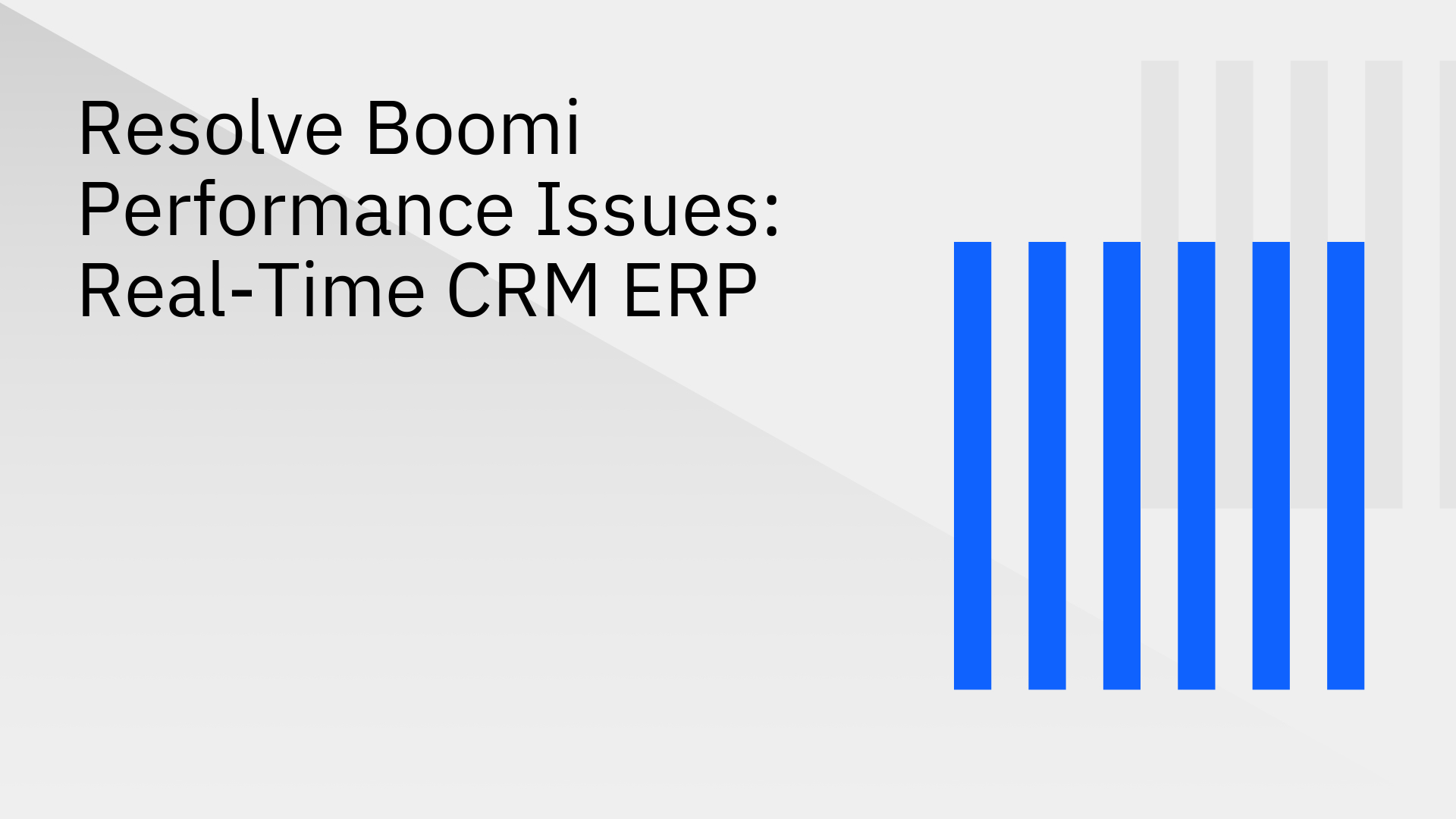
Dell Boomi is a widely-used cloud-based integration platform as a service (iPaaS) that helps businesses connect different applications and sync data between them [2].
While it’s a versatile tool, many organizations experience Boomi performance issues, especially when attempting to achieve real-time data flow between critical systems like a Customer Relationship Management (CRM) platform and an Enterprise Resource Planning (ERP) system. These delays and bottlenecks can create major operational headaches.
This article explores the common causes behind these performance issues in CRM ERP integration and introduces effective, modern solutions for achieving the true, real-time data synchronization your business needs to thrive.
Think of your CRM (like Salesforce) as your front office—it manages customer data, sales pipelines, and marketing efforts. Your ERP (like NetSuite or SAP), on the other hand, is your back office, handling finance, inventory, and core business operations.
For a business to run smoothly, these two systems must be perfectly in sync. Integrating them creates a single source of truth, eliminates manual data entry, and streamlines processes like converting a sales order into an invoice [4].
While Boomi is a common choice for this task, the fundamental differences in how CRMs and ERPs structure data can create significant complexity. Choosing the best data integration tools for bi-directional CRM and ERP sync is crucial to overcoming these challenges from the start.
When using a general-purpose iPaaS like Boomi for a highly specific and demanding task like CRM-ERP sync, several performance bottlenecks often emerge.
In today's fast-paced environment, making decisions based on outdated data is a significant liability [3]. Shifting from delayed batch processing to real-time integration delivers immediate and powerful business advantages.
Traditional ETL methods are no longer enough. To remain competitive, organizations must master real-time sync for CRM ERP integration and move beyond the limitations of older architectures.
If your business is struggling with Boomi's performance, you have a few paths forward.
The first step is often to try and fine-tune your existing Boomi integrations. This can involve refactoring process logic and optimizing data lookups. While this may provide some relief, it adds to your maintenance burden and typically doesn't solve the core issue of latency inherent in a batch-based architecture.
A more advanced approach is to supplement Boomi with an event-driven architecture. Instead of Boomi polling for changes on a schedule, an event-streaming platform like Solace can capture data changes as they happen and trigger Boomi processes instantly [1]. This makes Boomi more responsive but adds another layer of complexity to your integration stack.
For true, effortless real-time synchronization, the most effective solution is a platform designed specifically for this purpose. A purpose-built tool avoids the architectural compromises of a general-purpose iPaaS. A technical analysis of Boomi vs. other platforms often reveals that specialized solutions are far more performant and efficient for bi-directional synchronization.
Stacksync is a modern data synchronization platform engineered from the ground up to eliminate the performance issues found in traditional iPaaS like Boomi. It provides true, sub-second, bi-directional sync between your most critical business systems, including CRMs, ERPs, and databases.
Here is how Stacksync directly solves the common Boomi performance issues:
By focusing exclusively on providing the fastest and most reliable data synchronization, Stacksync offers a clear advantage over general-purpose tools. It is one of the top enterprise platforms for real-time bidirectional CRM sync.
While general-purpose iPaaS like Boomi can connect a wide range of applications, they often fall short when faced with the demands of real-time CRM and ERP integration. The resulting performance issues, data inconsistencies, and high maintenance overhead can hinder business growth and efficiency.
Workarounds can help but often add more complexity without solving the fundamental problem of latency. For businesses where data speed and accuracy are mission-critical, specialized platforms like Stacksync offer a more direct, performant, and scalable path to achieving seamless, real-time integration.
By choosing a tool built for the job, you empower your teams with consistent, trustworthy data that moves as fast as your business does.
Ready to resolve your integration performance issues for good?
Try Stacksync free for 14 days and experience the power of true real-time data synchronization.